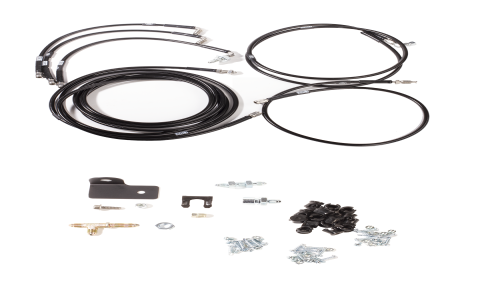For 2004 Chevrolet Silverado models, understanding the brake line layout is crucial for safe repair or replacement. The system utilizes a front-rear split with diagonal hydraulic circuit pairing.
Core Brake Line Configuration
- Front Circuits: Steel lines run from the master cylinder to the ABS modulator (typically mounted on the frame rail near the master cylinder). The ABS unit sends fluid to the front calipers via flexible brake hoses connecting to the front wheels.
- Rear Circuit: A primary steel line runs from the master cylinder along the driver's side frame rail towards the rear axle. It connects to a junction block mounted near the rear axle center.
- Split to Rear Wheels: From the rear junction block, separate steel lines run to left and right rear wheels, typically connecting via flexible hoses to either drum wheel cylinders or disc calipers.
- Hydraulic Pairing: The primary hydraulic circuits are diagonally split (e.g., Left-Front/Right-Rear and Right-Front/Left-Rear pairs), enhancing safety if one circuit fails.
Key Routing Details
- Frame Rail Path: The main front-to-rear line generally follows the driver's side frame rail, secured with clips.
- Near Fuel Tank: Be cautious where lines route near the fuel tank at the rear; this is a common area for corrosion.
- Over Axle: Lines exit the junction block and often run over the top of the rear axle housing to reach each flexible hose point.
- Radiator Support (Front): Lines routing to the front wheels may pass near the radiator support on either side.
Critical Components & Connections
- Master Cylinder Ports: Two primary ports feed the front and rear circuits.
- ABS Modulator Valves: Multiple inlet/outlet ports for each hydraulic circuit require careful disconnection/reconnection using correct flare nut wrenches.
- Junction Blocks: The rear block splits the single rear feed into two lines.
- Brake Line Fittings: Standard SAE flare fittings (typically 3/16" or 4.75mm lines). Double flares are essential.
- Flex Hoses: Connect fixed steel lines to calipers/wheel cylinders at all four wheels.
Safety & Replacement Tips
- Diagram Reference is Mandatory: Always consult a year/model-specific diagram before starting work; configuration can vary slightly.
- Corrosion Hotspots: Inspect lines above the fuel tank, near frame brackets, and the rear axle area closely. New lines often use NiCopp alloy for corrosion resistance.
- Use Flare Nut Wrenches: Essential to prevent rounding fittings on the ABS module or junction blocks.
- Bench Bleed Master Cylinder: Required if replacing or disconnecting the master cylinder.
- Bleeding Sequence: Follow correct order after repairs: typically RR, LR, RF, LF, or as per factory manual.
- Consider Pre-Fab Kits: Pre-bent steel or NiCopp line kits significantly ease installation for full replacements.

